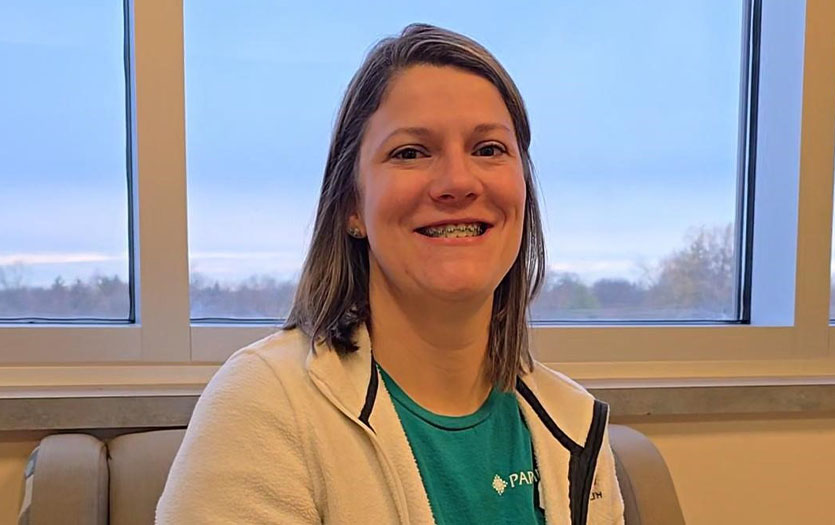
This post was written by Michelle Drouin, PhD, senior research scientist, Parkview Research Center.
In “Stars Wars: Episode IV - A New Hope”, Princess Leia delivers the iconic lines: “This is our most desperate hour. Help me, Obi-Wan Kenobi. You’re my only hope.” Princess Leia wasn’t collocated with Obi-Wan or Luke Skywalker when this appeal was made. She wasn’t even live video conferencing. This message, arguably one of the most compelling appeals in the history of film, was delivered via a recorded hologram.
After watching this clip, two things struck me. First, I was surprised that hologram-based messages, from a 1977 movie, are not a standard form of communication technology today. Second, I was shocked by how much Princess Leia’s message moved me. Immediately, I wanted to join Obi-Wan and Luke in their attempts to rescue Leia and restore justice to the galaxy.
This got me thinking. If a fictional character can motivate people, why do I have so much trouble getting a response to simple emails? And, more importantly, for all those people needing help right now, what can they do to increase their chances of getting the assistance they need?
According to psychological research, some approaches may work better than others, but these strategies might be useful to all of us trying to get others to help from a distance:
- Pinpointing a single person to help: Calling on one person to help maybe one of the most important ways to get people invested in your cause. When a general call for help goes out to the masses a diffusion of responsibility among group members may result in no one stepping up. In contrast, calling out someone specific for help with a task gives the target person ownership, responsibility and agency. The individual is more likely to respond and assume responsibility for the task and may even feel a sense of value for being the one selected for the task.
- Stating needs precisely: It’s best if there’s no ambiguity in the message and no room for misinterpretation. Think about the following situation. Let’s say you’re reaching out to a friend because you’re taking care of a loved one and feel overburdened. Instead of saying, “It would be great if you could help out,” perhaps pinpoint a specific need, like, “Could you please prepare dinners for the next 3 nights and leave them at my house?” Clear, concise requests allow people to understand and fulfill expectations.
- Conveying a message of hope: As Desmond Tutu said, “Hope is being able to see that there is light despite all of the darkness.” When trying to enlist others to come to your aid, you may want to use the idea of hope to motivate them to help. According to Chadwick (2015), hope appeals require two elements: a) getting others to feel hope by presenting them with an opportunity, and b) suggesting actions that will allow them to take the opportunity and accomplish the intended goal. Helpers want to feel that their efforts are not going to waste and that they’ll be working towards a goal that aligns with their interests. So, if you want people to join in the final push on a big project, try saying something like, “We only have 5 more short reports to pull together, and this project is finished!” This will help others see the light at the end of the tunnel.
- Being direct and unequivocal: The best way to ask for help is to reach out to someone and say, “I need your help.” Unfortunately, many people may find it hard to reach out because they don’t want to be perceived as weak or they may see some stigma attached to the help they are seeking, like economic assistance (Lens, Nugent, & Wimer, 2018). People also tend to underestimate, by as much as 50%, the likelihood of people saying “yes” to their direct requests which led researchers Flynn and Lake (2008) to conclude, based on their series of six studies, “If you need help, just ask.” The best way to let someone know you need help is to be direct. And, although it may leave you feeling somewhat vulnerable, it leaves nothing open to interpretation.
With that said, some people might still be wondering how to best frame their requests for help or whether they should even ask at all. If you’re still debating, it’s important to recognize that the benefit of helping doesn’t just flow in one direction. Psychological research has helped us reframe the concept of helping from a unidirectional positive influence to a bidirectional one. Indeed, there seems to be the undeniable benefit to the one giving in the form of a helper’s high, but according to Dossey (2018), giving help to others might make you more in touch with the idea of the greater good and possibly give you some health benefits too, like lower levels of stress and depression and higher levels of happiness. Remember, if you reframe requests for help as opportunities for others to shine, it can make asking for help a whole lot easier.
Sources
Chadwick, A. E. (2015). Toward a theory of persuasive hope: Effects of cognitive appraisals, hope appeals, and hope in the context of climate change. Health Communication, 30(6), 598–611. https://doi.org/10.1080/10410236.2014.916777
Dossey, L. (2018). The Helper’s High. Explore: The Journal of Science & Healing, 14(6), 393–399. https://doi.org/10.1016/j.explore.2018.10.003
Lens, V., Nugent, M., & Wimer, C. (2018). Asking for help: A qualitative study of barriers to help seeking in the private sector. Journal of the Society for Social Work and Research, 9(1), 107–130. https://doi.org/10.1086/696356



